6 Essential Website Elements Every Small Business Needs to Have
Many small business owners believe that a website's job is for lead generation. Just create website pages, write the recommended minimum of 300 words per page, add a call-to-action button to the top and bottom of every page then sit back and the phone will start ringing.
Yet the primary job of a website isn’t to only generate leads. In fact, 92% of consumers visit a brand's website for the first time for reasons other than buying.
So, what is the job of a website in the marketing strategy of a small business today?
Sometimes the job is to demonstrate capabilities for evaluation committees, showcase expertise to qualified prospects, create likeability with strategic partners, or build trust for a potential employee. In other scenarios, the job is to influence the awareness and education part of the customer journey.
I believe there are a handful of critical elements every small business must have to develop a effective-world-class website, and I’m listing a few of them one by one in this post with explainer content associated.
6 Critical Elements Your Website Must Employ Today
- A problem-solving message that your ideal customer values and want
- Clear calls to action
- A clear identification of who your business gets results for
- Outline of sample offerings
- A page explaining your process and what customers can expect
- Credibility and trust elements
1. A problem-solving message that your ideal customer values and want
If you've been following me for any amount of time you know I talk a lot about understanding the real problem you solve for ideal customers and then using that as a message of differentiation.
Nobody wants the products, services, subscriptions, or solutions your business sells, they want their problems solved.
Rather than spending time talking about your own years in business and what you do, it’s more important to connect with a potential client about the challenges they are facing.
You start this approach by thinking about the problems you know you can solve and create your message around the vision of what your ideal client is looking for.
Today I want to bring forth a real-life case study from one of our clients. We conducted our marketing diagnosis, determined the real problem their ideal customers want solved, and transformed that problem into their message of differentiation.
Now when most prospects reach out to them, they want to learn more about how they will do what they promised not how much it cost.

Read more about understand and solve your customers’ problems.
2. Clear calls to action
One of the real underutilized opportunities these days is to use your online presence to drive local offline sales.
Let’s say you have a membership type of offer like a gym. Put a “get a free pass” button and form on your site so that you can put a free trial offer in their hands before they come to your door.
A financial planner could use this same approach for a upcoming seminar on investment advice. Or you could allow customers to grab a “bring a friend” pass for an early bird sale.
Businesses that run primarily by appointment must start making it easier for today’s mobile-enabled customers to book a time on the fly. This means adding appointment booking functionality to your website so that prospects can schedule when it’s convenient for them and see that you have that perfect spot open in two hours when they are free.
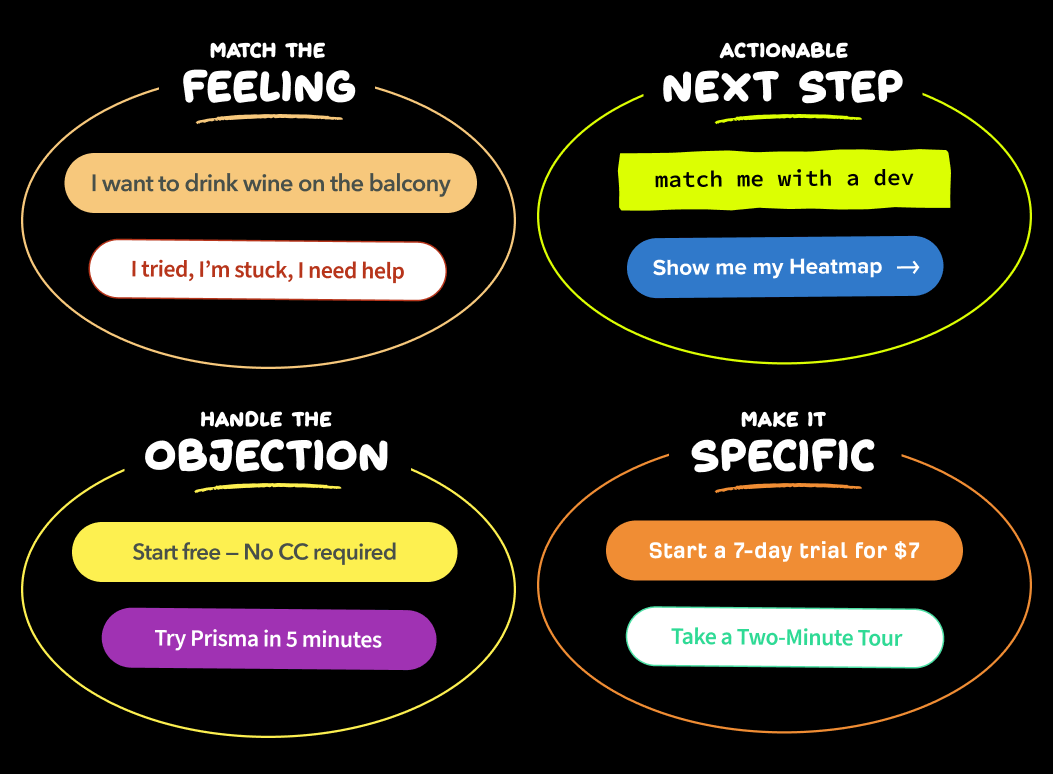
3. A clear identification of who your business gets results for
If you're read any of my previous post then you know one of the most important elements of marketing is a narrowly-defined ideal client.
So let me ask you this one question:
⭐If you only got paid after clients got the results you promised, what key characteristics would they have to have in order for you to take that risk?⭐
This forces you to really ask:
👍🏽who do you best serve?
👍🏽who can you deliver the greatest value to?
👍🏽 who can you get results for?
It’s really important that you develop the habit of understanding:
🔎 who it is that you’re going after
🔎identifying them
🔎building your entire business around attracting them
Write a detailed description of your ideal client and include as much about them as possible including the problems they are trying to solve.
Give some thought to how you might reach them and appeal to them.
Tip: Use your best clients today to help you think about what makes them ideal for you.
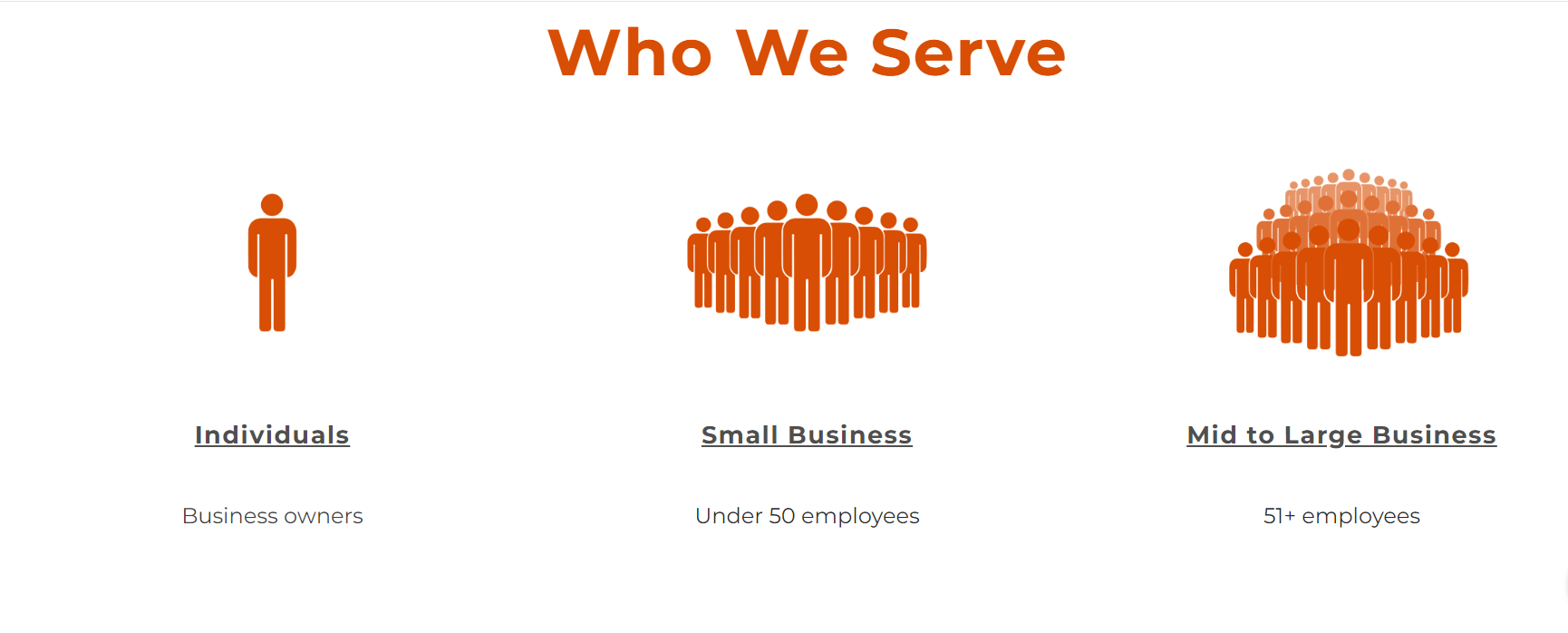
4. Outline of sample offerings
In today's business world you need a way to back up your claims.
Offering some way to sample (date) your expertise or service is becoming an increasingly important element in building trust.
A free consultation, small project, coffee chat, proof of concept (aka proposal), workshop, seminar or paid assessment that allows prospective clients to understand and even feel how you understand their problems makes trust grow even faster.
You want to give prospects a way to try your approach.
When they can see the way you work to solve their problem, they gain confidence in your ability to get the job done.
How are you going to offer a way to date your expertise or service?
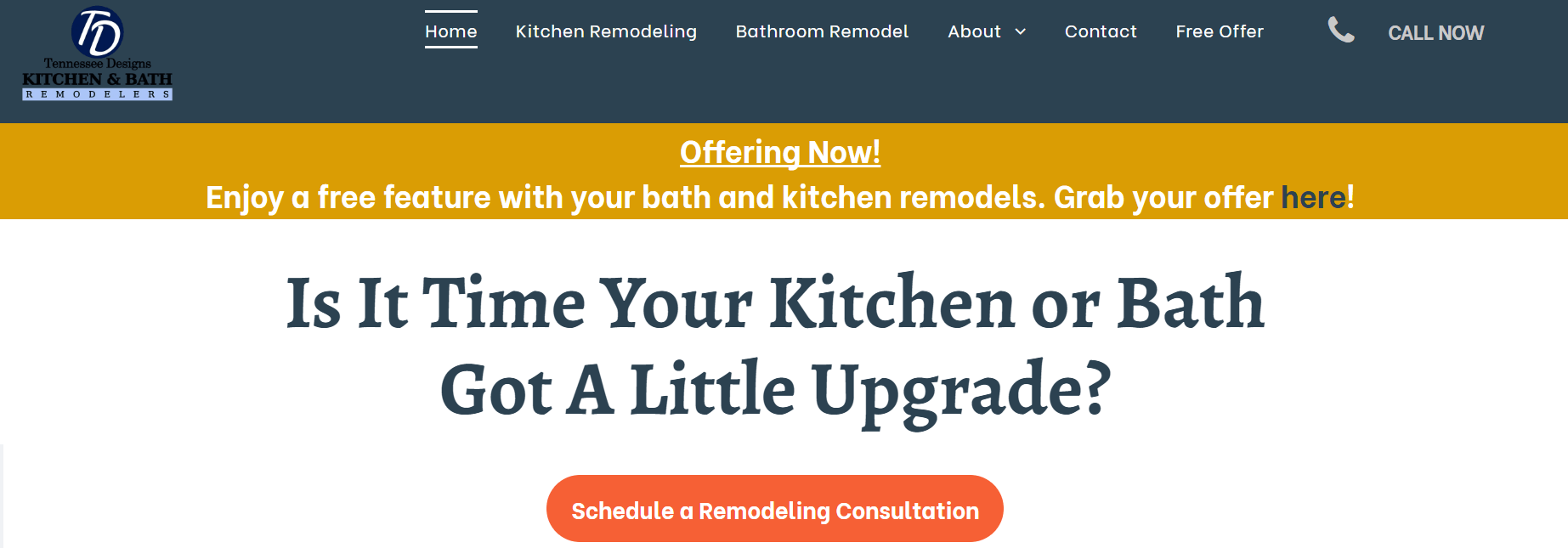
5. A page explaining your process and what customers can expect
Processes are frequently documented and used solely as internal documents in order to stay on top of tasks and get work done. What many small businesses don’t realize is that if you have a solid process, this can actually serve as a great marketing message.
One of the greatest challenges you face is getting a prospective client to pay attention to how you are different. In the mind of the most clients, one business is like another.
Here's a simple content tactic I like to employ with clients. Think about the processes you use in your business to effectively deliver results to your clients and start giving them names. This makes your process more tangible to the prospect.
Examples:
⚙️Accident Forgiveness Intake
⚙️5 Point HVAC Clean Air Process
⚙️Know Where You Stand Audit
⚙️Get to Know You Call
⚙️Marketing Checkup
⚙️No Charge First Visit
⚙️Better Than We Left It Process
⚙️7 Step Results Review
⚙️Monthly Activity Analysis
⚙️Make It Right Visit
⚙️Call You Back Process
⚙️Give Us The Details Meeting
⚙️Never Leave You Clueless Chat
⚙️Clarity Conversation
⚙️Scope Validation
People might not be buying because they don't fully understand the benefits or how a product or service works but naming and documenting your processes offers a prospect proof that you do indeed have a step-by-step procedure you follow that assure results will make them more inclined to work with you.
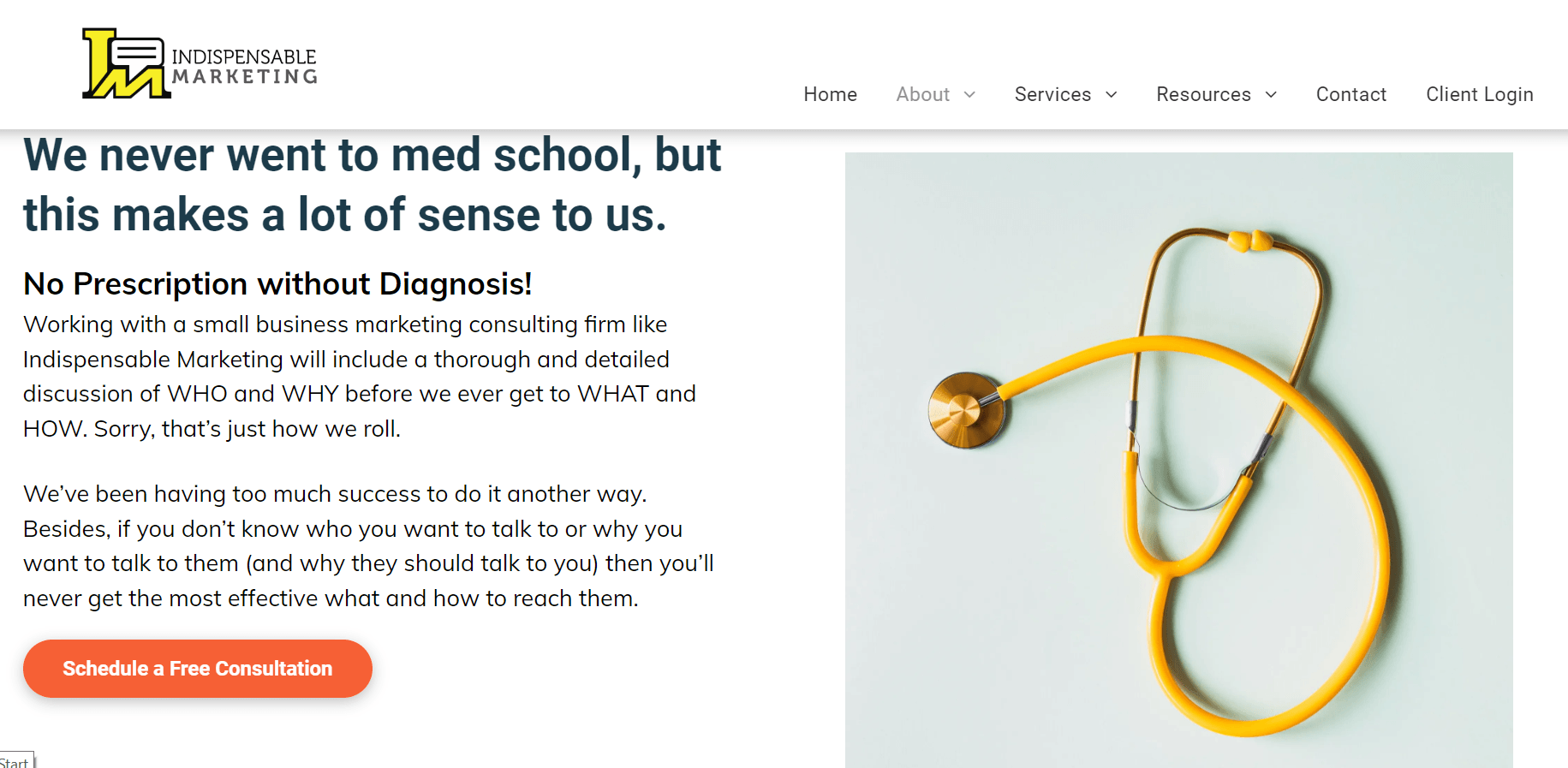
6. Credibility and trust element
Today most prospective customers are going to perform some amount of research online and in a lot of cases that means they've made a business decision about what and who to purchase from before they ever picked up the phone or sent an email or talked to a supplier.
To be on the offense you must acknowledge this behavior and start giving and making available to your customers the resources, tools and information to view your business and service as the obvious choice.
When we land on a website, we first determine whether or not the company can solve the problem. If they do, the next step is to look for details about how they've helped like-minded people.
That’s why you need case studies, customer testimonials and examples right on the homepage. This will help your audience trust you by giving them proof.
So you have to get involved in that customer journey when they’re out there just doing the initial research.
Incorporate trust elements in your marketing.
Whether they be logos of current customers, best of class awards or testimonials for your audience to glance over. Make them easy to find and place them on all communication channels.
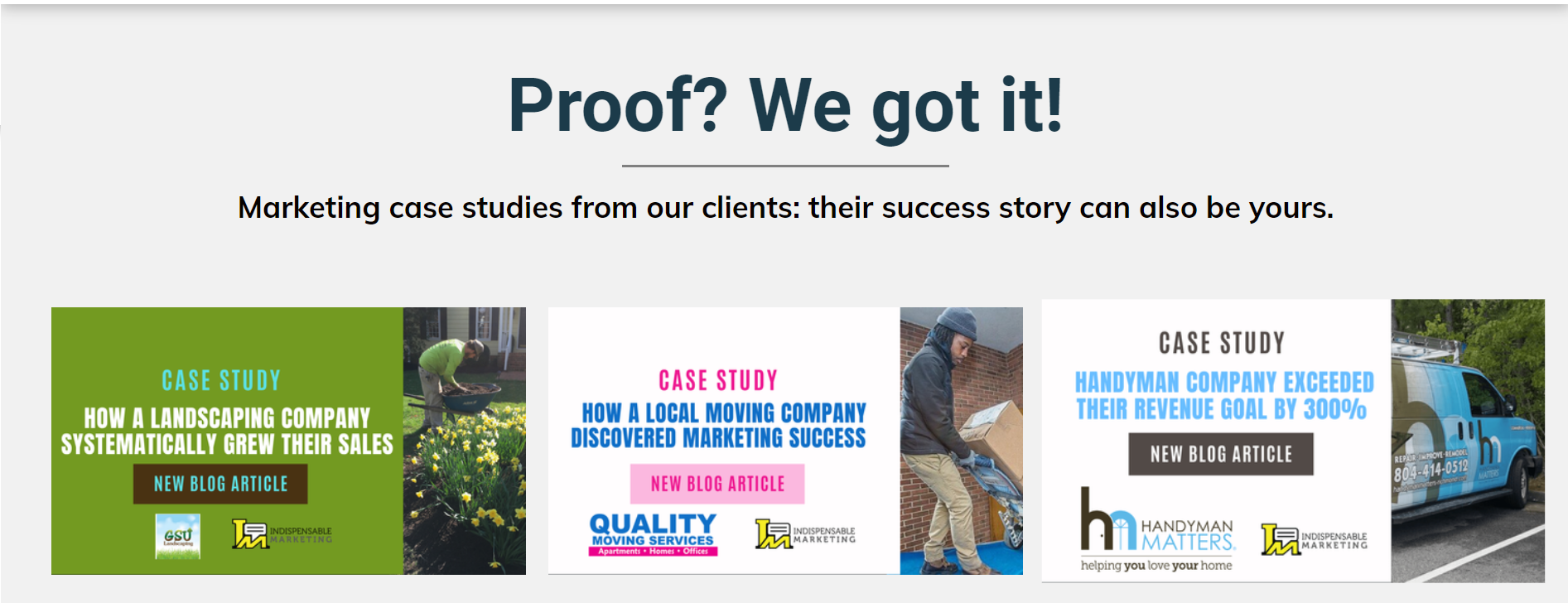
Contact Your Marketing Consultant at Indispensable Marketing
If you’re a small service provider that needs help with building an effective website or your online presence on Google and other search engines, at Indispensable Marketing we can help. We offer marketing strategy consulting, marketing audits, monthly marketing packages, consultations, exploratory calls or monthly local SEO services. Contact us for more information.




